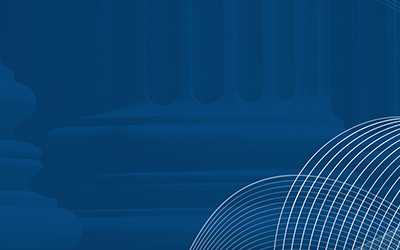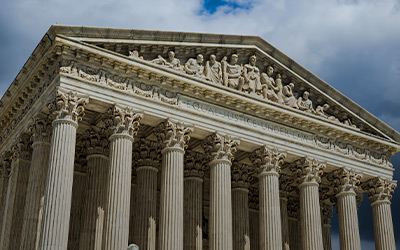On May 18, 2021, the Internal Revenue Service (IRS) issued Notice 2021-31 providing information about the Consolidated Omnibus Budget Reconciliation Act (COBRA) continuation coverage subsidies created by the American Rescue Plan Act (ARPA). Notice 2021-31 addresses a range of issues pertinent to assisting employers, plan administrators and insurers with understanding the COBRA subsidies and associated tax credits. The IRS notice consists of a background explanation of the ARPA COBRA subsidies and a series of 86 questions and answers (Q&As) with some examples. The notice explains and provides guidance on topics such as the calculation of the credit, the eligibility of individuals, the premium assistance period and other similarly vital information. The following is a review of selected Q&As from Notice 2021-31. For more information on the COBRA subsidies, interested individuals should read and review the notice in its entirety. Before implementing any changes to their COBRA plan, employers should consult with legal counsel and their plan administrator.
IRS Notice 2021-31 provides background guidance on the application of the section of the ARPA (Section 9501) relating to the temporary premium assistance for COBRA continuation coverage.
Section 9501 of the ARPA gives assistance eligible individuals (AEIs) a temporary 100% reduction in the premium otherwise payable (a premium subsidy) when an AEI elects COBRA. The COBRA premium subsidy period runs from April 1, 2021, through September 30, 2021. According to IRS Notice 2021-31, an AEI is an individual:
- who is a qualified beneficiary with respect to a period of COBRA continuation coverage during the period from April 1, 2021, through September 30, 2021, and eligible for that COBRA continuation coverage reduction in hours or involuntary termination of employment,
- who is not eligible for another group health plan coverage or Medicare and
- who elects COBRA continuation coverage.
Several FAQs in the IRS guidance provide answers to inquiries about who is eligible for premium assistance.
The IRS guidance noted that COBRA premium assistance is available to a potential AEI until another GHP permits them to enroll in coverage (including during a waiting period). The guidance states that if the original qualifying event for a COBRA qualified beneficiary (QB) was a reduction in hours or an involuntary termination of employment, subsidized coverage is available to those who elect to remain on COBRA for an extended period due to a disability determination, second qualifying event, or an extension under State mini-COBRA, to the extent their additional periods of coverage fall between subsidy periods. However, the FAQs inform QBs that if their COBRA eligibility is based on a qualifying event other than a reduction in hours or involuntary termination of employment, a later reduction in hours or involuntary termination of employment does not cause a loss of coverage and the qualified beneficiary, therefore, does not become a potential AEI.
The FAQs also provide clarity on who qualifies based on a reduction in hours and insight into what may be considered an involuntary termination of employment.
The IRS FAQs state that an employee’s reduction in hours would cause the qualified beneficiary to be a potential AEI regardless of whether the reduction in hours is voluntary, such as when an employee voluntarily reduces their hours to a point that makes them ineligible for coverage under the employer’s GHP or involuntary. Further, whether an absence from work is a reduction in hours depends on whether the absence from work results in a loss of coverage. Based on the FAQs, an involuntary reduction in hours may include furloughs and work stoppages that result in an employee’s hours being reduced by their employers. According to the FAQs, whether a termination is voluntary or involuntary may require a facts-and-circumstances-based analysis. For example, the FAQs state that when an employee voluntarily terminates their employment because the employer initiated an involuntary material reduction in hours, that situation constitutes an employer initiated involuntary termination. The IRS gives the following as an example of a voluntary termination that may in fact be involuntary.
If a termination is designated as voluntary or as a resignation, but the facts and circumstances indicate that the employee was willing and able to continue performing services, so that, absent the voluntary termination, the employer would have terminated the employee’s services, and that the employee had knowledge that the employee would be terminated, the termination is involuntary.
According to the FAQs, an involuntary termination of employment also occurs when an employer terminates an employee if there is a reasonable expectation that the employee will return to work after their illness or disability. However, mere absence from work due to illness or disability before the employer has taken action to end a worker’s employment is not an involuntary termination of employment, but the absence may qualify as a reduction in hours if it results in the loss of coverage.
The notice reiterates, that as stated in other guidance, an AEI’s premium subsidy period can end before September 30, 2021.
The ARPA COBRA premium assistance does not extend beyond the period that an AEI is eligible for COBRA continuation coverage. Furthermore, an AEI’s premium period ends when an individual is eligible for coverage under any other group health plan (GHP) or Medicare. If an AEI receiving premium assistance becomes eligible for coverage under any other group health plan or Medicare, they are responsible for notifying their COBRA provider that they are no longer eligible for the subsidized coverage. If they fail to make that disclosure to their COBRA plan they are subject to a penalty equal to the greater of $250 or 110% of any improperly received subsidies.
According to the FAQs, an AEI who is currently enrolled in individual health insurance coverage through a Health Insurance Exchange may still be eligible to elect COBRA and receive premium assistance.
If such an AEI elects subsidized COBRA coverage, they are not eligible for premium tax credits during any months that they were enrolled in COBRA continuation coverage. Someone who elects COBRA continuation coverage (with or without COBRA premium assistance) and is enrolled in coverage through a Health Insurance Exchange with advance payments of the premium tax credit (APTC) may be required to repay the APTC for the overlapping months. Anyone in this situation should seek the counsel of a tax professional for advice on how to handle repayment.
Employers may require potential AEI to self‐certify eligibility, and employers can collect attestations from their employees as proof of eligibility for the premium tax credit.
An employer may require individuals to attest that they are eligible for subsidized COBRA coverage due to a reduction in hours or involuntary termination of employment. Employers can also use the employee’s attestation as certification that the employee is not eligible for another GHP or Medicare. Employers are not required to obtain a self-certification or attestation, but employers who claim the credit must retain in their records some documentation that substantiates that employees receiving the premium assistance were eligible for the subsidy.
An employer may allow an AEI to elect coverage different from the coverage under the plan in which the individual was enrolled before the qualifying event, and the subsidy will apply to that newly elected coverage.
ARPA instructs employers to allow individuals to enroll under a plan that is different than the coverage they enrolled in at the time of their qualifying event. However, the subsidy only covers coverage that is equal to or less than their cost of coverage at the time of their qualifying event. Consequently, unless otherwise allowed under the COBRA regulations or other applicable law, an AEI is not able to receive premium assistance if they choose coverage with a premium greater than the premium for the coverage that they were enrolled in at the time of the qualifying. If the plan that covered them at the time of their qualifying event is unavailable, then they can elect coverage through a similar plan and receive subsidize coverage even if the premium is more than the plan that covered them at the time of their qualifying event.
The premium assistance and second chance election is available to QBs that qualify as an AEI who have not made a COBRA election including spouses and/or dependent children that covered by the employee’s plan at the time of the subsidy eligible qualifying event.
If an employee had a reduction in hours or an involuntary termination of employment before April 1, 2021 and elected self-only COBRA continuation coverage, their spouse or dependent child who is a qualified beneficiary as a result of their reduction in hours or involuntary termination of employment has a second chance employment opportunity available to them. Based on COBRA regulations, a qualified beneficiary is anyone who is enrolled in a COBRA eligible plan that experiences a COBRA qualifying event. Qualified beneficiaries include spouses and dependents covered by an employee’s plan. A spouse or dependent child who is a beneficiary under the GHP covering an employee are AEIs. Being AEIs gives such spouses or dependent children a second election opportunity if the covered employee only selected self-only COBRA continuation coverage prior to April 1, 2021.
The FAQs cover several other issues related to the ARPA premium assistance. Employers should review Notice 2021-31 to become familiar with all the scenarios and inquiries addressed by the IRS. Before making any plan or administrative changes employers should consult with legal counsel and their COBRA plan administrator.
See our related Compliance Alert for more info on COBRA Subsidy Q&As
EPIC offers this material for general information only. EPIC does not intend this material to be, nor may any person receiving this information construe or rely on this material as, tax or legal advice. The matters addressed in this document and any related discussions or correspondence should be reviewed and discussed with legal counsel prior to acting or relying on these materials.
Sign up for our Compliance Matters Newsletter
You’ll receive our monthly newsletter, as well as special compliance alerts and invitations to our compliance webinars
Related Content
Products
Employee Benefits Consulting
Our dedicated benefits team is focused on delivering better outcomes – to both your benefits program and ...
Products
Compliance
We provide comprehensive consulting services and in-depth education regarding the ever-changing employee ...
Products
Actuarial
Our Actuarial Team provides guidance on employee benefits and health and welfare programs to help meet ...



